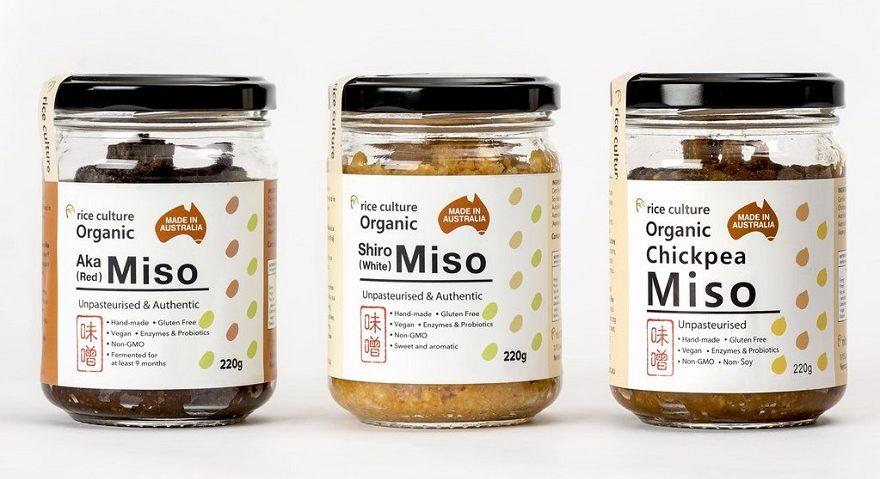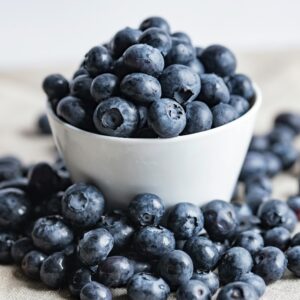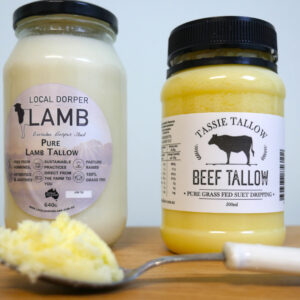The word ‘miso’ translates to ‘fermented beans’ in Japanese and is quite simply just that.
Typically made from soybeans that have been fermented with a variety of different grains such as rice or barley, miso paste gives Japanese cooking that delicious ‘umami’ flavour. A longer fermentation period yields a darker and more flavoursome miso, while a shorter ferment will produce a lighter and more subtle paste.
So there are different types?
You may be surprised to learn there are literally hundreds of types of miso, just like cheese and wine. Adjusting the grain, bean and salt ratio, as well as, the fermentation time produces different results. It is also dependent on the quantity of Koji used. Koji is a type of enzyme rich fungus that assists fermentation.
Here are four of our favourites……
Rice Miso (Kome Miso)
Shiro Miso (white miso): Fermented for 2 to 6 months, this miso is made from soy beans and rice and a higher level of Koji. It is light in colour with a mild and slightly sweet flavour. Being the mildest type of miso means it’s also the most versatile. Tastes great in an apple crumble! Recipe here.
Aka Miso (red miso): Fermented for 12+months, this miso is much more pungent and saltier than the white, ranging in colour from dark red to brown. You need only a little to add serious flavour to your dishes. The darker colour and longer ferment also yields a higher concentration of antioxidants and gut friendly probiotics.
Brown rice Miso (Genmai Miso)
This golden paste has a mellow and slightly sweet flavour and is made with soybeans, brown rice and Koji. It’s a great all round, general purpose miso for everyday use.
Chickpea Miso
For those who wish to avoid soy products, chickpea miso is a great alternative. It still has all the amazing benefits and flavour of traditional types. Unpasteurised and fermented for up to 4 months, chickpea miso has a sweet and aromatic flavour and is brimming with beneficial enzymes.
Barley Miso (Mugi Miso)
Barley Miso is made from soybeans, barley and Koji and fermented for up to 2 years resulting in a deeper and fuller bodied flavour. It also contains a higher proportion of protein than other varieties.
What are the health benefits?
Miso is an excellent food for supporting a healthy digestive flora and energising the body. It contains an array of probiotics and minerals to enhance immunity, which is especially important through the cooler months. These fresh miso pastes would need to be kept in the fridge as they are considered a living food.
Miso varieties that are shelf stable and do not require refrigeration are a great option for those with sensitivities to fermented products. These types of miso will impart that delicious umami flavour and give a boost of minerals without causing digestive upset.
How can I use it?
White, Chickpea and Brown Rice Miso
All three varieties make a delicious base for broths, soups, dressings and marinades and can even be spread straight on bread or crackers. They can also be used in sweet dishes such as our Raw Miso Caramel Butter.
Red and Barley Miso
These miso pastes are perfect for marinades, dips and foods requiring a richer depth of flavour such as eggplant, tomato, meat and fish dishes. Mix a tablespoon with tomato paste and spread on a pizza base for a rich umami flavour. Avoid using red miso in sweet baking and desserts.
If possible, add miso at the end of cooking as heating can destroy beneficial bacteria.
How to choose the right miso?
When buying, be sure to select a miso made from non GMO and, if available, organic soy beans with no other additives or preservatives. After opening, keep in a cool dry place or refrigerate.
by Emma H for go natural foods











